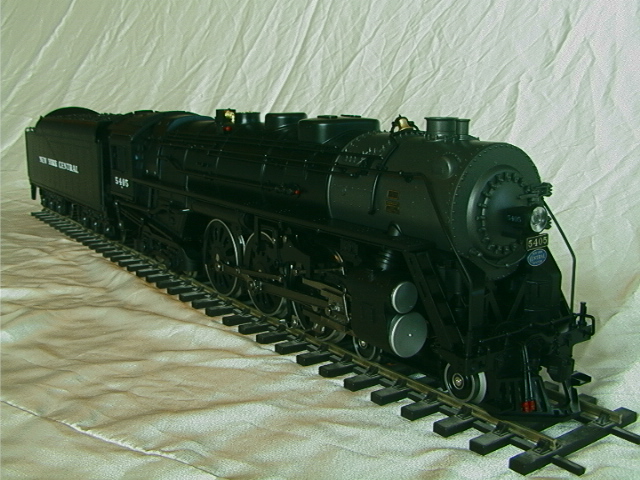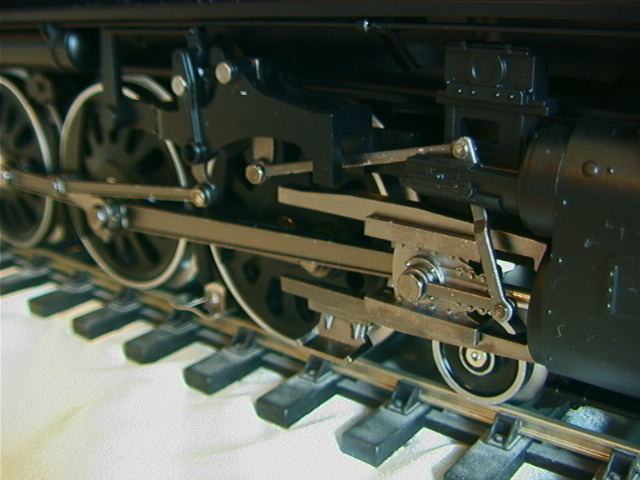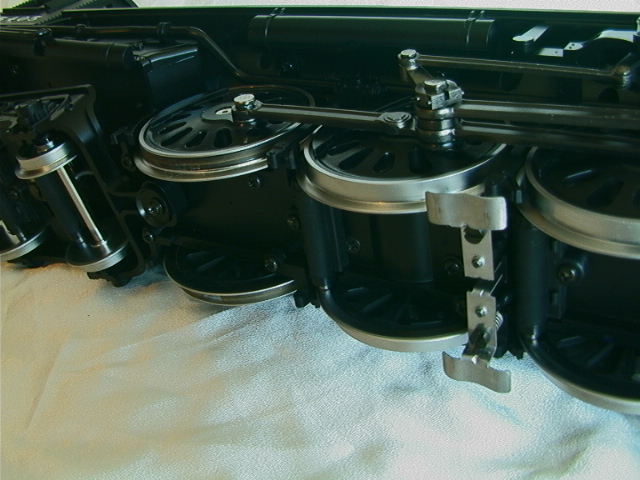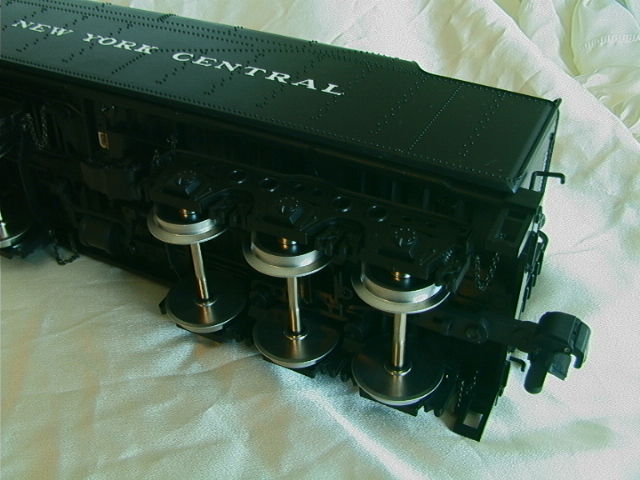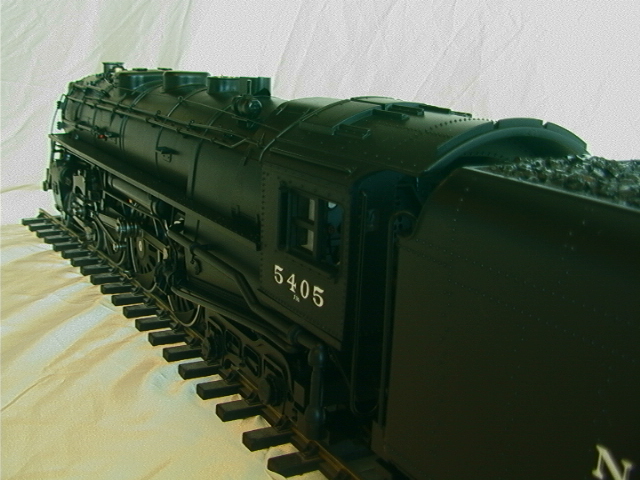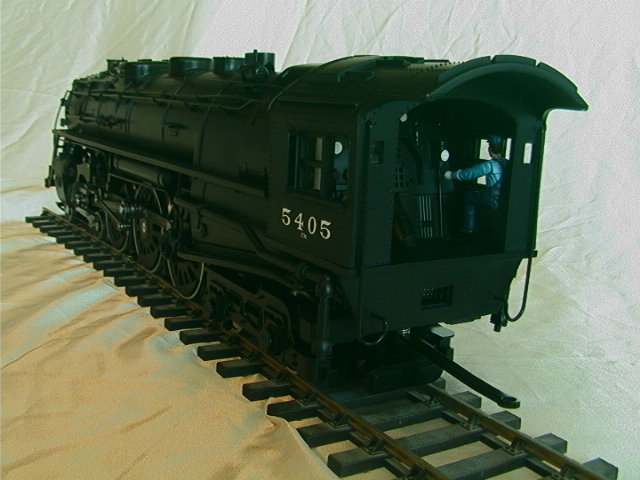Now that we have our hands on the full retail product we can at last show you what you are getting. Bearing in mind that we are selling these we are not going to expect that you regard this as a totally unbiased view, never mind here we go:
There is one funny thing that may ring the tilt bells before you open up the box in that there is a "3-rail" sticker on the end of the carton! Please rest assured that the locomotive is 2-rail, and thus gives a much easier conversion if you need 3-rail than if you had to convert from 3 to 2-rail operation. In fact there is another reference to 3-rail at the back of the manual and it could either be that MTH had considered a 3-rail product and thought better or that the page concerned has been taken from their other ranges without effective proof-reading. The sticker on the box suggests the former.
First impressions. It is large (as expected), it is heavy for a plastic model but it does alltogether feel sturdy and it can easily be lifted using the inside of the cab roof and either the inside of the smokebox or the pilot. The model is detailed but not super-detailed, the "Rivarossi for gauge-1" description seems valid. The coupler between loco and tender has only one setting as supplied and this is at far too great a pitch (this must be to allow it to go round the ridiculously tight #2 radius curves, which is fine in itself, but that there is only the one factory setting is really feeble). The stainless tyres on the driver and leading truck look fine given that the boxpok and disk wheels are black but the wheels on the trailing truck and on the tender have not been covered in the same way and you get the full benefit of the shine of the stainless, some black paint provides a simple improvement. The flange depth (3mm) is not finescale but neither is it ridiculous. The smokebox door opens to give access to potentiometers adjusting the volume of sound and smoke. The interior of the funnel is visibly choked down, possibly this is to aid the smoke unit. Other than the smokebox and detail items the main finish is a satin black which will probably suit most owners, it could of course be weathered down if required. Finally we mention what most other commentators have regarded as the prime gripe with the model; the power pick up shoes. Put simply these pick ups do not look good and despite their effectiveness they will, for some people, destroy the otherwise good lines of the model. Perhaps it is time to share a little secret; this model is also rigged to pick up from two of the driving axles and the trailing truck and it does not actually need the shoes to operate, so if you wish these can be removed. Having read this you may wonder why the locomotive has been fitted with shoes in the first place. The most likely answer seems to be that due to the scraping action they may help clean and therefore provide further reliability for outdoor (possibly brass) track such as is used by LGB. In the case of traditional LGB locomotives it must be remembered that there may be only two supporting axles and, with their smaller sizes and lower weights, traction tyres are a needed, which in turn means that pick up shoes are a necessary evil. In the case of the Hudson there are already four axles rigged for pick up and it would not take a total genius to add wiper contacts on to the tender trucks which would give ten axles. We really do feel that this small modification, together with the use of a commercial or home-built track cleaning car, would provide a reliable and aesthetically acceptable solution. Incidentally the rear drivers are fitted with traction tyres, as if the model's weight did not give enough adhesion.
(by kind permission of the Editor we can now also provide the independent Continental Modeller review)
